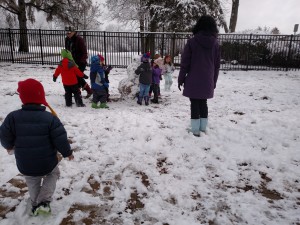It was a thrill to be back. As a whole, the children made a startlingly smooth transition back to school today. January tends to be that time when our class becomes almost as comfortable as a family. Similar to a family, in the Otter class, we know each other pretty well and we trust each other pretty deeply. When we grow to this point, behavior can reflect that familiarity and trust – especially the trust that one will be loved even if one makes a bad choice.
Today was a very peaceful day. Everyone treated each other with respect and showed respect for the rules they created. Yes, young people did speak a few angry and respectful words in times of discomfort or disagreement. And those words were respectfully listened to. This is the future of our world!
January is one of my favorite months as we explore individual differences, cultural differences, rights, and the Civil Rights Movement in the United States.
We began today by focusing on the differences in the color of our skins, and the similarities in our hearts: joy, pain, love, and fear. We read Mem Fox’s Whoever You Are, and some children then had their turn to mix paint colors to find their individual skin tone.
Meanwhile, other students began a mini-study of buses, so we can build our own bus in class to use when we explore the Montgomery Bus Boycott in the coming weeks.
We talked some about changing “bad rules.” Students posited unfair rules, and they discussed the reasons why they were unfair. At first, some maintained that it would be fine to make everyone wear Elsa boots. When another child suggested, “no, everyone has to wear boy shoes,” the conversation shifted. I was impressed with the clarity of thinking and communication when a student said, “no, because we have boys and girls here.”
I’m always hoping that there will be a time when we talk about each other more as individuals than as members of groups, gender-based or otherwise. The precepts of most languages, with their gender-specific pronouns, suggest this is unlikely. But if we can at least converse about differences, if we can respect and even enjoy our differences, I think we’re moving in a healthy direction. If we can recognize that each of us is inherently worthy of dignity and respect, I think we’re moving in a healthy direction.
When three and four year olds recognize that we don’t all need the same kind of shoes, and should be free to choose those that are best for us, I think we’re moving in a healthy direction.
“We have boys and girls here.”
This is the future of our world.


